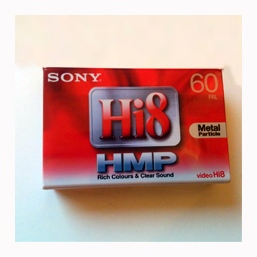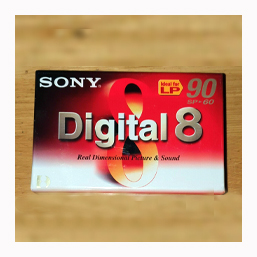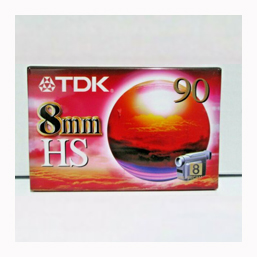SERIOUS AGE RELATED TECHNICAL ISSUES WITH SONY HI8 TAPE TECHNOLOGY
TAPE DROP OUTS
In Video8 and its successors, the smaller head drum and tape can make recorders more susceptible to the effects of "tape dropout", where magnetic particles are eroded from the tape surface. As the audio/video signal is contained in a smaller area on a Video8 tape, a single dropout has a more damaging effect. Hence, dropout compensation in Video8 systems tend to be more advanced in order to mitigate the format's vulnerability to dropouts.
LIFESPAN OF 8MM TAPES
8mm tapes need to be stored vertically, out of direct sunlight, in a dry, cool, dust-free environment. As with any media, they will eventually deteriorate and lose their recorded contents over time, resulting in a buildup of image noise and dropouts. Tapes more than 15 years old may start to show signs of degradation. Among other problems, they can become sticky, jamming playback units, or become brittle and snap. Such problems will normally require professional attention.
However, the 8mm format is no more prone to this than any other magnetic tape format. In fact, the metal-particle technology used with the Video8 formats is more durable than the metal-evaporated type used with MiniDV. Hi8 tapes can be either of Metal Particle (MP) or Metal Evaporated (ME) formulation.
Because 8mm tapes use a metal formulation, they are harder to erase than the oxide tapes used with VHS, S-VHS, and Betamax tapes. As such, carefully stored, they are less susceptible to magnetic fields than the older formats.
METAL PARTICLE HI8 TAPE DEGRADATION
One major issue with HI8 tape is that they can quickly become highly distorted and black and white. Old metal particle tapes are particularly prone to being erased when watched even if the tapes have been stored in a safe place.
In the past era of Hi8, there was a problem with tape lubricants used by Sony . Equally, the result of mixing tape brands on your camcorder or machine was head clogs. Standard practice said stick to one brand of tape, and clean the heads (and tape path) if you have to change to a different tape brand.
The issues arose when Sony produced a tape that did not require lubricant. Eventually around the mid 1990's the makers of Hi8 tape agreed to use the Panasonic formula lubricant which resulted in far fewer issues. While the lubricant issue was cleared for new production tape, old Sony tapes still existed and could cause serious issues when playing back old recordings.
Bottom line for working with Hi8 tape is to clean heads when changing brands . ME tape had better magnetic characteristics and sold for a premium, but was not as robust mechanically as MP tape and thus more prone to drop outs with repeated playback. ME was better for tape that would be recorded once, and played once to edit/capture. MP was lower cost and better for tapes that would be played often.


